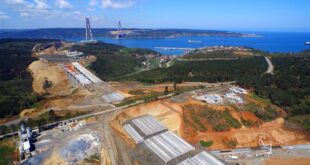Asia-Pacific, China, India, Indonesia, Japan, Malaysia, Myanmar, South Korea
Perhaps one of the biggest changes for Asia’s M&A market in 2013 is the significant increase expected in inbound investment into Myanmar. The suspension of certain international sanctions, along with the passing of the new Foreign Investment Law, which was brought into force in November last year, has heralded significant interest in M&A opportunities and other inbound investment from overseas investors.
Myanmar is a country with a population of over 60 million, the largest country (by land-mass) in Southeast Asia, has extensive natural resources and is seen by many to be a strategically important location between China and India.
The M&A landscape in Myanmar is certainly changing, but investors will need to consider carefully the structuring of any M&A investment in light of continuing investment restrictions as well as issues concerning corruption, responsible investment and the efficient repatriation of profits.
2. Chinese investment and the portfolio balancing act
Chinese resource companies are becoming less focussed on their quest to acquire assets in emerging markets and are increasingly targeting more mature markets. Such companies are increasingly wary of putting all of their eggs in one basket and instead they are now looking to diversify and rebalance their investment portfolios.
The largest-ever Chinese outbound investment was announced last year when China National Offshore Oil Corporation bid to buy Canadian Nexen Inc. for US$15.1 billion. The same state-owned-enterprise also recently entered an agreement to buy a significant stake in an Australian LNG project, while other Chinese investors have reportedly been making moves on UK based interests.
This is a trend that we expect to increase in 2013 as Chinese resource companies continue to focus on building more balanced investment portfolios.
3. Japanese investment in to India
With a strong yen and a sluggish domestic market, Japanese companies are needing to look at overseas markets to satisfy their growth ambitions. And of course India, with its weak rupee and burgeoning domestic market, was bound to catch their collective eye.
This year Japan has been the second-largest investor, after the US, in Indian based targets. Japanese investors announced a total of 20 M&A deals with an aggregate value of US$5.6 billion in 2012.
What is more, Japanese companies are sitting on significant cash reserves in comparison to US and European investors who have been more affected by the global economic downturn.
In 2013, India will continue to be an M&A destination for Japanese investors with the pharmaceuticals, financial services and automotive sectors remaining key areas of focus.
4. Private equity will look to Indonesia
The major growth opportunity for Asian private equity investors in 2013 lies in penetrating new markets in South East Asia.
The Asian private equity sector on a whole had a slow 2012, however, markets in South East Asia driven by continued steady economic growth and investment opportunities created by family succession factors should offer opportunities in 2013.
Indonesia stands out as one of the most promising investment destinations for private equity. Its economy grew 6.3 per cent in 2012 and is expected to grow a further 7 per cent this year.
Key private equity players are increasingly focusing on this region and we saw KKR open its Singapore office only a few months back with a remit to build up its Indonesian portfolio.
5. China outbound deals going up the value chain particularly in Europe
While energy needs will continue to dominate China’s outbound direct investment, we expect a growing number of deals in manufacturing and services sectors. Of particular interest to Chinese investors will be targets that offer access to technology.
Chinese investment during the last year grew 110% in Germany, 72% in the United Kingdom and 46% in the Netherlands. Interest at these levels may very well continue or even possibly increase. The EU will continue to provide attractive investment opportunities to Chinese investors which are likely to be keenly priced.
In terms of non-energy sectors, Chinese investments in the EU’s automotive, communications equipment/services and logistics sectors are likely to remain strong. Chinese investors will also be keen to access the EU’s luxury goods market, including French wines, perfumes and cosmetics.
6. The rise in agribusiness transactions
Concerns over food security and a growing Asian middle class are transforming global demand patterns for food – nowhere more so than in China. It currently has 20 per cent of the world’s population, but only nine per cent of the world’s farmland. By 2030, it is expected that almost 60 per cent of the world’s middle class spending will be from Asia, transforming the region’s food demands. Accordingly it is not surprising that Chinese and other Asian investors are emerging as some of the largest buyers of agricultural land worldwide.
Australia and Africa are emerging as the key investment destinations. State-owned-enterprise Beidahuang is looking to acquire 100,000 hectares of land in the state of Western Australia along with transport infrastructure in order to supply grain back to China.
In 2013 we expect to see Asia’s focus on agricultural investment increase with a continued focus on Australian, South American and African markets.
7. Increased PE trade sales as the IPO markets remain comparatively quiet
IPO exits for Asia’s private equity firms have been on the decline over the past 18 months. In 2012 the number of private equity-backed IPOs halved and proceeds dropped approximately 25 per cent from the previous year.
Yet trade sales have remained reasonably consistent with a number of strategic buyers still willing to pay for assets that offer synergies with their existing investments and are likely to offer a strong long-term return.
With little evidence to suggest that we will see a wholesale turnaround in the Asian IPO markets in the short term, private equity players with an eye to an exit will be increasingly focusing on securing a good price from strategic investors or secondary private equity buyers. Given there is currently a pipeline of assets nearing the end of their private equity investment cycle, we believe it likely that we will see a significant number of these transactions completed in 2013.
8. Asian financial services opportunities
As uncertainty continues to dampen attitudes to European and American financial institutions, we expect Chinese banks and finance companies to focus on Asian opportunities in 2013.
In 2012 we saw the acquisition of ING’s insurance business in Hong Kong, Macau and Thailand by Richard Li Tzar Kai and in Malaysia by AIA. It is likely that 2013 will see further divestments by European banks and we expect Asian finance houses, particularly Chinese banks with ambitions to establish regional networks and increase their Asian coverage, to be likely buyers.
9. Upstream investment in Malaysia
We are starting to see an increasing number of companies looking to invest in upstream oil and gas projects in Malaysia under the new Risk Service Contract (RSC) model, a government led initiative to drive domestic oil production and exploration. The RSC model allows for knowledge transfer from joint ventures between foreign and local players, providing shared risk and numerous financial incentives.
In 2012 Petroliam Nasional Berhad (PETRONAS) announced the Refinery and Petrochemical Integrated Development, a joint venture project in Pengerang, Johor, Malaysia. Working with a number of partners, the project is expected to produce 9 million tonnes of petroleum products and 4.5 million tonnes of petrochemicals per annum and to draw over RM120 billion (USD39.23 billion) in investment over the next 5 to 6 years.
The next round of bidding for similar projects in Malaysia is expected early in 2013 and we understand that there is a lot of interest from Japanese, Australian and Singapore-based oil and gas companies wanting to participate.
10. EPC contractors to acquire minority stakes in development projects
In Korea, we have observed a trend of Korean energy and construction companies acquiring minority stakes in oil & gas, mining and power development projects as a means of increasing their competitiveness to win project development roles or in securing commodity off-take from a project. Recent examples of this include KOGAS’s investment into the Prelude LNG project in Western Australia, POSCO’s investment into the Roy Hill iron ore project in Western Australia and KEPCO’s investment in the Shuweihat power project in the Middle East.
We expect this type of investment activity to further pick up in 2013 as Korean companies continue to buy stakes in large mining and energy infrastructure projects around the world as means of securing project development roles and commodity off-take. Securing these roles and these energy imports are essential for Korea to sustain its growing economy and significant Government support is likely to continue to be provided to enhance Korean companies’ prospects for success.
Lexology
 Asia Finance News Asia finance news, banking, market analysis, business, Forex, trade, Cryptocurrency as it is happening in Asia. Trusted gateway for Asian financial news.
Asia Finance News Asia finance news, banking, market analysis, business, Forex, trade, Cryptocurrency as it is happening in Asia. Trusted gateway for Asian financial news.





